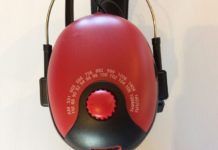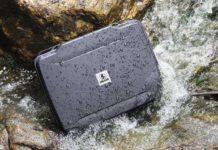Professional musicians understand the importance of a good quality microphone in order to make a great recording. If you’re new in the world of recording, picking the right microphone can be a little intimidating. If you’re experienced however, you probably know that certain microphones work better with particular instruments. Do you need a dynamic or a condenser cable mic? What is there to know about polar patterns and diaphragm sizes? Let’s take a look at the things you should consider when looking to buy a new microphone.

Types of Microphones
- Dynamic Microphones – The audio signals are generated by the motion of the conductor within a magnetic field, a very thin, lightweight diaphragm moves as a response to sound pressure. These microphones are less sensitive than condenser microphones, are more durable and less expensive.
- Condenser Microphones – These microphones are more responsive to speed and sound wave nuances than dynamic ones. Their simple mechanical system consists of a stretched, thin conductive diaphragm placed near a metal disk. This setup creates a capacitor which has the electrical charge provided by an outside source – battery, power supply or your mixer. They come in a variety of sizes and shapes.
Features to Look for in a Microphone Cable
- Durability – If you intend to move the microphone around a lot, you will need a durable cable mic. Otherwise, you’d need to buy a new cable often which will negatively affect your budget. The shield is the main thing that will protect your microphone cable – it isn’t visible, and it wraps around the insulator. It’s designed to protect the wires from interference.
- Length – For live performances, it’s useful to have a longer cable to be able to move around freely on the stage. However, it can also cause mishaps if it gets tangled in your feet. Most cables have male XLR connectors on one end, and a female XLR connector on the other end, which means you can connect multiple smaller cables.
- Flexibility – If a cable mic is flexible, it also means it’s probably durable. Cable flexibility means it won’t rip and tear easily.
Microphone Polar Patterns
- Cardioid – These microphones posses the quality to hear what’s in front of them and reject side and rear sounds. This makes them useful in multiple microphone situations as well as in cases when you want to avoid room noises.
- Omnidirectional – These are excellent microphones to capture room sounds with whatever you are recording. Every microphone is “born” omnidirectional and then is modified to create different patterns.
- Figure 8 – These microphones are sensitive to sounds picked from the back and the front of the microphone. They are also known as bi-directional.
Diaphragm Size
There are two basic types of diaphragm sizes – large and small, and one that is a hybrid of the aforementioned two – medium. Large diaphragm microphones are used to record pretty much anything, they are considered the most versatile microphones in a studio. Small diaphragm microphones are ultra-responsive due to their smaller and lighter diaphragms. They are your go-to choice for acoustic guitar, harp or any similar instrument with extended overtones and sharp transient, and are favourited by many as drum overheads.
Applications
Microphones can be applied for a large variety of instruments as every instrument creates a better sound recording when combined with a specific microphone. Cardioid dynamic ones go best with drums, cardioid small diaphragm for the hi-hats, and large or small diaphragms for the overheads. Electric guitars go amazingly well with a dynamic microphone, while acoustic guitars work wonders with small-diaphragm cardioid condenser microphones.
There’s much more tricks and tips to be learned and taught for properly using microphones to their full potential, but we’ve said enough to cover up the basics and to give you a good idea of in which direction you should go if you’re looking to purchase a brand new microphone.















